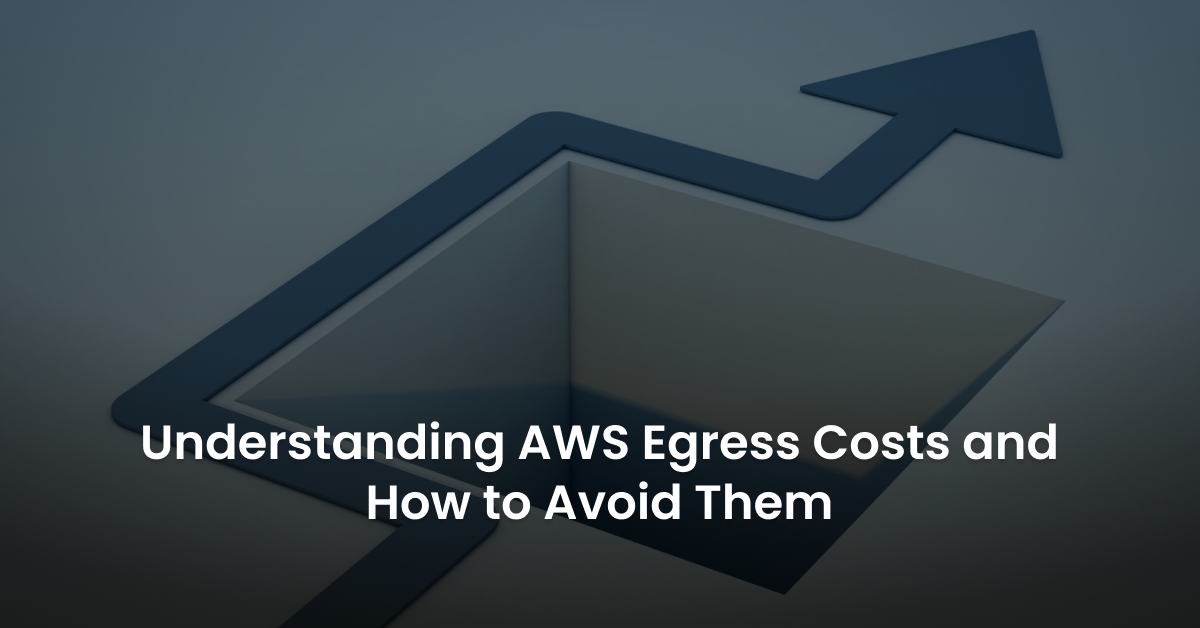AWS charges data transfer costs when you link several AWS services or move from one availability region to the other. Outbound data transfer costs, also known as egress costs, apply when using routing services and Content Delivery Networks.
One of the leading culprits of hidden costs are Egress Costs, because it can be challenging to track how your data moves. For example, users report excess charges on cloud BI (business intelligence) even within AWS free tier. The chances are that you exceeded free tier data transfer limits. In a snapshot, data transfer costs occur when:
- You use a two-way data transfer model, and there’s a cost for inbound or outbound data transfer.
- Egress costs occur when moving data from one availability region to another region with higher data transfer costs.
- You will incur data transfer costs when linking multiple services such as EC2 (Elastic Compute Cloud), S3 (Simple Storage Service), and CDN (Content Delivery Network).
Also Read: Reduce AWS Data Transfer Costs: Don’t Get Stung by Hefty Egress Fees
How Are Egress Costs Calculated?
Due to the dynamic nature of data transfer costs, the best way of estimating costs is using the AWS Cost Explorer. The Cost Explorer is a deep visibility tool that could give insights into Egress activities. You can view data transfer costs by month service and forecast future costs based on past usage patterns.
To analyze your data transfer costs:
- Use cost allocation tags to label every resource in your infrastructure, which will help in the accurate reporting of data.
- Open the Cost and Usage Reports over a period you want to analyze. Select each service to filter data transfer cost by service.
- Filter the usage type group; this groups data transfer costs from regions, inter-availability zones, and the Internet.
- Check all inbound and outbound data transfer costs, click Apply. Download the CSV for further analysis.
How to Reduce Egress Fees
You can reduce Egress fees by understanding the mechanics of cloud networking. Begin by using a private IP address, free CDN, or architect your apps with a cache.
- Use a CDN: Even though unit data transfer costs tend to decrease with higher data volumes, the total cost of moving large Terabytes of data could still get out of control. Content Delivery Networks compress files, images, and videos, which reduces the size of data transferred. CDNs not only helps in faster data transfers it also reduces the total cost. Amazon Cloudfront is a content delivery network that transfers data fast, under low latency. In addition, you can store data in the Amazon S3 bucket for free. AWS Cloudfront will transfer your data via low-cost data centers.
- Use a Private IP Address: If you only want to transfer data within an organization, consider using a private IP address. A private IP address eliminates data transfer costs associated with a public IP. In addition, a private IP is more secure than a public IP, which reduces any chance of misconfiguration, which increases data transfer costs. The AWS Direct Connect service lets you move data within on-premise networks and the public cloud at fewer costs. The direct connect service reduces data transfer costs by eliminating the high bandwidth internet service and offers lower egress rates for files more than 10 GB.
- Limit Outbound Data Transfer: In real life, outbound data transfer rates cost more than inbound data transfers. You can consider using lightweight methods of distributing content, like text. Also, compress images, videos, and files. Avoiding duplicate content also limits outbound data transfer costs. It’s equally important to consider unique businesses that may need to transfer massive terabytes of data. These include Mapping services, GIS services, Satellites, and Space Exploration organizations. If you feel left out of the typical data transfer rates, consider negotiating a private agreement with AWS Enterprise.
- Maintain a Single Availability Region: Choosing another availability region may not always affect performance. Deploying your servers in US Central (Iowa), North Virginia, and South Africa gives you the lowest rates on data transfer costs. Due to geographical tax regimes, some regions are not eligible for free-tier discounts. Local and regional businesses can maintain their traffic within a single region by blocking external IP addresses and ports.
- Use AWS Free Tier: The AWS free tier lets you transfer data free for one year, provided you don’t exceed the limits. The quota for the forever-free plan is up to 1GB per month.
The Bottom Line
You can always reduce data transfer costs by controlling your cloud operations. You can use VPC (virtual private cloud) endpoints to avoid a high bandwidth connection. You can limit the amount of data transfer, always keeping the total above 10GB to benefit from discounts.
Using cost-saving recommendations is also the most useful way to optimize cloud costs. Use third-party monitoring services early enough in your cloud journey to receive valuable recommendations on reducing egress fees.
Use nOps cloud monitoring service to receive timely alerts whenever there’s an excess Egress cost. You can learn more about how to reduce AWS egress costs with nOps.
Start your nOps free trial or schedule a demo to see it live in action!



